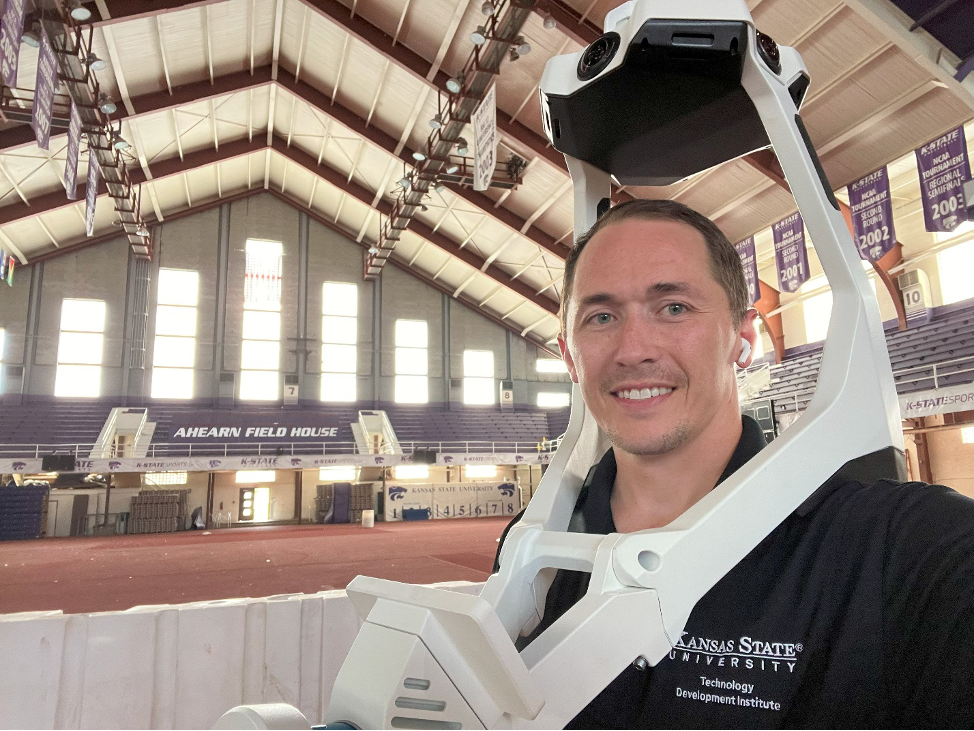Kansas State University’s Technology Development Institute has acquired a NavVis VLX scanning system that will help the institute support manufacturers and other partners by creating 3D renderings of indoor facilities through the creation of point cloud scans and panoramic images.
The Technology Development Institute, or TDI, in K-State’s Carl R. Ice College of Engineering obtained the new system through a $2 million Economic Adjustment Assistance grant from the U.S. Economic Development Administration, or EDA. As part of the EDA University Center program, TDI has begun working with a range of organizations to begin documenting facilities, scanning nearly 1 million square feet of space to date.
The VLX scanner uses a combination of Light Detection and Ranging, or LIDAR, and optical cameras to capture point cloud data — data that represents a 3D shape or object — and panoramic images. This combination of data enables the creation of a colorized point cloud that is dimensionally accurate down to 5 mm. The scans are processed in the cloud on NavVis servers and can be viewed online using a viewer software. The result is an image similar to that of Google Street View but inside a facility and with the ability to measure any distance in the space virtually at any time.
TDI has been working with several large manufacturing companies to scan recently acquired operations at multiple locations across the country. As new equipment is requested, TDI and the companies can use the NavVis VLX scanning system to determine ideal and exact placement within the facility and ensure integration with existing equipment.
Locally, TDI has partnered with the K-State campus planning and project management department and the Applied Aviation Research Center at K-State Salina to scan the interiors and exteriors of the natatorium and gymnasium prior to their removal to document the facilities for historical purposes. Drones capture inaccessible exterior point cloud data, which is combined with the NavVis scan data to create a complete, dimensionally accurate virtual model of the buildings.
“This new scanning technology has allowed us to assist manufacturing companies in new ways, with technology they have never had the ability to utilize in the past,” said Jacob Picolet, senior engineer at TDI. “From planning and simulation modeling to marketing, the ability to virtually walk through a facility and access data on what’s in it helps to streamline the process of changing out equipment or adding new operations.”
The K-State Technology Development Institute, a U.S. Department of Commerce Economic Development Administration University Center, provides a broad range of engineering and business development services to both private industry and university researchers to advance the commercial readiness of new products or technologies.
_ _ _
KSU Photo: K-State’s Technology Development Institute has acquired a NavVis VLX scanning system that creates 3D renderings of indoor facilities through point cloud scans and panoramic images.



